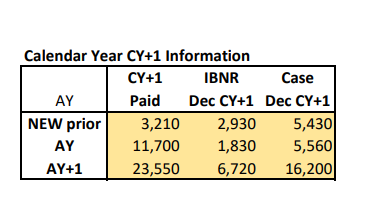Spring 2016 #12
can you explain why the paid 36,350 that we calculated in the intermediate step for the prior years in CY-2 is subtract the amount we calculated from CY-2, CY-1 & CY?
It looks like you're new here. If you want to get involved, click one of these buttons!
can you explain why the paid 36,350 that we calculated in the intermediate step for the prior years in CY-2 is subtract the amount we calculated from CY-2, CY-1 & CY?
Comments
Where in the answer key do you see this interim step 36,350?
I think they were referring to my solution:
And here is a snapshot of the part with the 36,350:
yes I was just curious why we make the row for prior in paid triangle only equal what has happened since the oldest year in the columns?
Ok. I take it you understand that we are making the prior row equal to only the amounts paid since the oldest year. The reason for this is simply because the prior year is defined that way. The reserve triangles show the reserve of prior years as of the start of the oldest year. Correspondingly, the paid triangle prior row shows the payments made on that reserve.
For the prior row, does the case reserve = part2 - part3 - part4 relationship still hold?
Yes, it does.
So to clarify, the top left cell of any Schedule P, Part 3 (for any actual company or any exam question) will always be zero, correct?
Yes, correct.
I guess there should be one assumption in this problem that the schedule P has only 4 rows. So, we should combine the old previous row and 2013 to the new previous row in order to maintain 4 rows for 2015 Schedule P. Am I right? This is the same situation happened in 2016 Fall 12.
2016.S.12 assumes three rows, instead of the usual 11 rows of parts 2, 3 and 4. Other than that, your understanding is correct.
Could a question like this give the Schedule P part 1 information and ask us to calculated the updated table rather than the nice table provided below? If so is there a special way to do that?

If you are given two Sch P Part 1's for CY and CY+1, you will be able to produce data in this table's format for CY+1. Let me know if this answers your question.